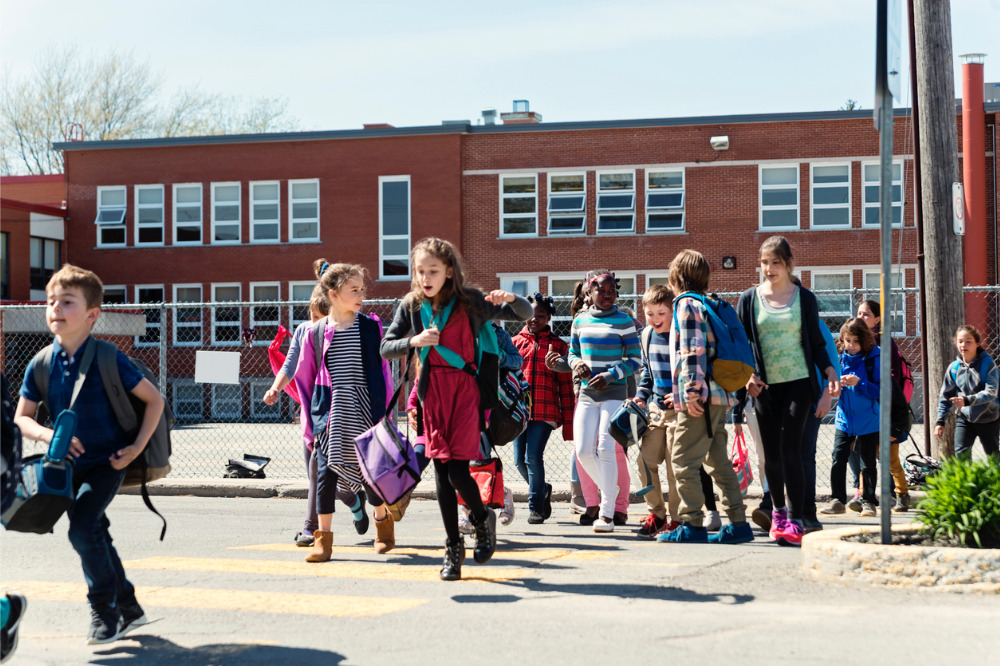
In what has been an extraordinary year for teachers, having to deal with the additional responsibilities of COVID-19 including health and wellbeing, school shutdowns and delivering education by remote learning, it comes as no surprise that workloads are increasing across the board in public schools.
Even before the coronavirus pandemic, workloads for teachers in public schools were soaring, both in real terms and compared to the OECD average.
From increased teaching and learning commitments, larger class sizes and administration and workload, expectations on Australian public school teachers are ever demanding.
According to the OECD, in 2017 net teaching time for Australian public primary school teachers per year was 865 hours, compared to the OECD average of 784 hours.
By 2019, net teaching time for Australian public primary school teachers per year had hit 880 hours, compared to the OECD average of 778 hours. Australian average teaching hours have gone up, while the OECD average has dropped.
With global teaching trends focusing on freeing up time for teachers to provide more high-quality student instruction and assessment, there is much the Australian Government can learn from other OECD nations about supporting teachers.
In a similar vein, Australian public school class sizes are higher than the OECD average. In 2019, the average class size in an Australian primary school was 23.5 students, compared to OECD average of 21 students.
Ask any teacher about the benefits of a smaller class for students in enabling quality individualised teaching and learning for students who need extra help.
Expectations around administration and assessment requirements (such as NAPLAN) are steadily taking up valuable teacher time. Most teachers often spend their evenings and weekends preparing and assessing curriculum content for students because there simply isn’t sufficient time provided during the school day.
To compound escalating teacher workloads, according to the OECD, Australia’s investment in public education is well below average. Public school teachers in Australia are being asked to do more while the resources that governments provide are deeply inadequate for the needs of teachers and students.
Australia is ranked only 19th out of 37 countries in terms of average funding per public school student. In terms of education spending as a proportion of total government spending, Australia ranks below countries such as Chile, South Africa and Mexico.
The Federal Government has signed bilateral school funding agreements with the states and territories which lock in resourcing inequality for years to come, with 99% of public schools below the Schooling Resource Standard (SRS) by 2023 while the vast majority of private schools will be above the SRS.
Additional funding is vitally important for schools to ensure that teachers and education support personnel have the resources that they need to cater for every child. It also provides systemic support to alleviate escalating workloads, provide smaller class sizes and specialist teaching and learning for those students who need extra help.
The demands of COVID-19 have highlighted the additional workloads that teachers have borne in 2020. According to the AEU’s 2020 State of our schools survey conducted in May, 27% of public school principals said that they did not have the resources necessary to shift to remote learning, and 68% said they received no additional resources to help with the transition to remote learning.
The survey also showed that 69% of teachers worked on average 12 additional hours per week on top of their usual hours when involved with remote learning And yet, the Federal Government has not provided a single dollar of extra funding to public schools to assist teachers to manage and adapt to the unique demands and workloads that the coronavirus pandemic poses, whether they are teaching face-to-face or by remote learning.
Instead, they provided $10 million to private schools to improve COVID-19 hygiene measures, in what can only be described as failing their fundamental responsibility to the two-thirds of school students who attend public schools.
Extra investment into public schools is not only good for teachers and students, it is good for the economy.
A significant Commonwealth investment into both recurrent public school funding and a public school capital works program in the upcoming Federal Budget is one of the most effective ways to provide substantial stimulus across a number of sectors.
Such an investment will ensure that public schools will be at the heart of securing a better future for all students and have the added benefit of building Australia’s economic recovery.
Correna Haythorpe is the Federal President of the Australian Education Union.


